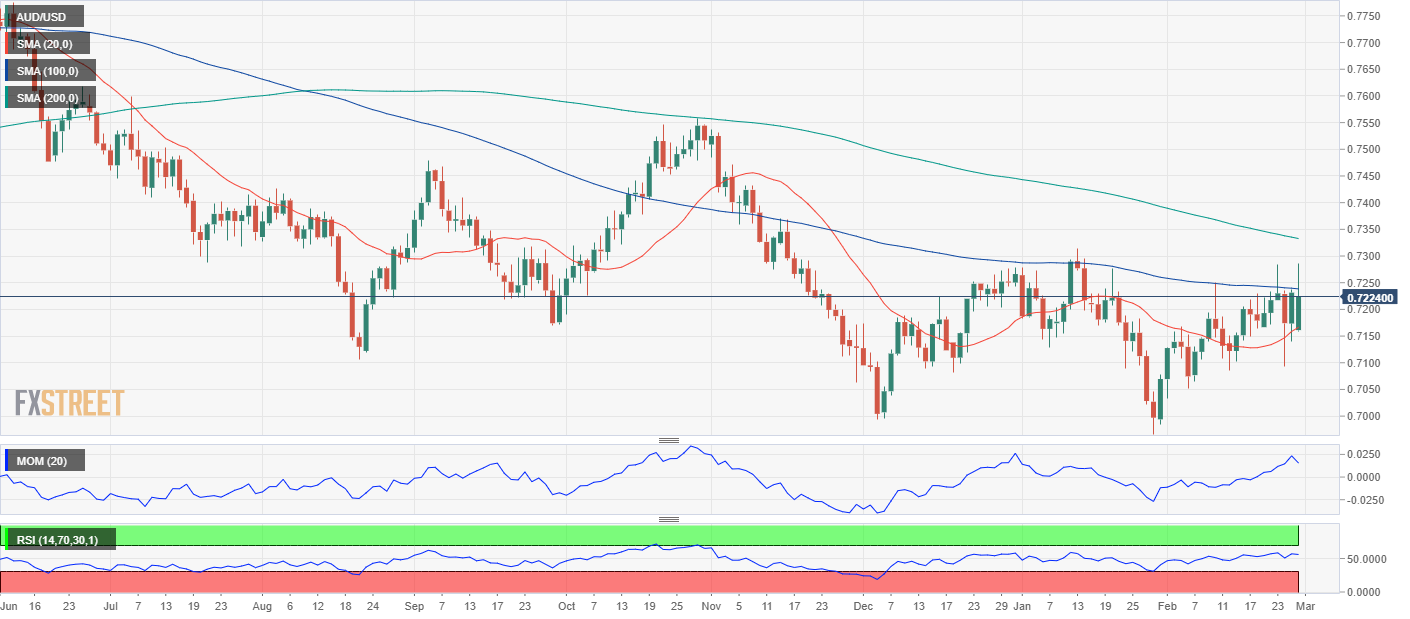Reserve Bank of Australia Preview: Inflationary pressures and wage growth take center stage
- The Reserve Bank of Australia will likely maintain its benchmark rate at 0.1%.
- The aussie has been quite resilient to the risk-off environment, trading near its yearly high.
- AUD/USD needs to clear the 0.7280/0.7310 region to gather bullish momentum.
The Reserve Bank of Australia will announce its decision on monetary policy on Tuesday, March 1st. The central bank has so far resisted inflationary pressures, although it was forced by market conditions to lift the yield-curve control at the end of 2021. At this point, Australian policymakers continue to pledge for a rate hike in 2024, despite speculative interest having moved forward chances of a rate hike to the second half of this year. Generally speaking, financial markets expect two rate hikes before year-end, totalling 0.50% of hikes.
Consumer Price Index and salaries
Australian price pressures remain elevated and are expected to keep rising throughout 2022. On the other hand, wage growth remains subdued. The RBA has made it clear that future rate hikes are dependent on signs of wage inflation. Policymakers said they want to see it rise beyond 3% to help them make up their minds on pulling the trigger.
Last week, the country reported that the Q4 Wage Price Index rose by 0.7% in the three months to December, the most since early 2014, and by 2.3% YoY, slightly below the 2.4% expected. It was the highest annual reading since the second quarter of 2019 when the coronavirus pandemic hit the world. The figures, while encouraging, are still well below the RBA’s target.
Even further, the RBA is now expecting real wages to keep falling well into 2023, according to their latest estimates, while they also believe that inflation will outpace wage growth until mid-2023. Inflation in the country is currently running at 3.5% YoY, slightly above policymakers’ comfort zone, but hardly as bad as in the rest of the major economies.
The Reserve Bank of Australia is expected to maintain its benchmark rate at a record low of 0.1%, and market players will focus on hints about upcoming decisions. Will the central bank be more worried about inflation and less about salaries? Or will policymakers keep their stubborn view and dismiss inflation-related concerns?
AUD/USD possible scenarios
The Australian dollar has been quite resilient to the risk-off environment that is leading financial markets these days. The AUD/USD pair trades around the 0.7200 figure, not far from a February monthly high of 0.7283. The pair fell to 0.7094 when Russia invaded Ukraine but quickly recovered from that level, somehow hinting at buyers’ dominance.
A hawkish stance from the RBA should push the pair higher, at least temporarily. The pair topped at 0.7313 in January, which makes the 0.7280/0.7310 price zone quite a strong resistance area. Beyond it, the pair has room to extend its advance towards the 0.7400 figure, where buying interest should recede.
Should investors feel disappointed, the pair will likely fall toward the 0.7100 region, although it will need to clear the 0.7070 support to turn bearish in the mid-term and test the psychological 0.7000 threshold.


